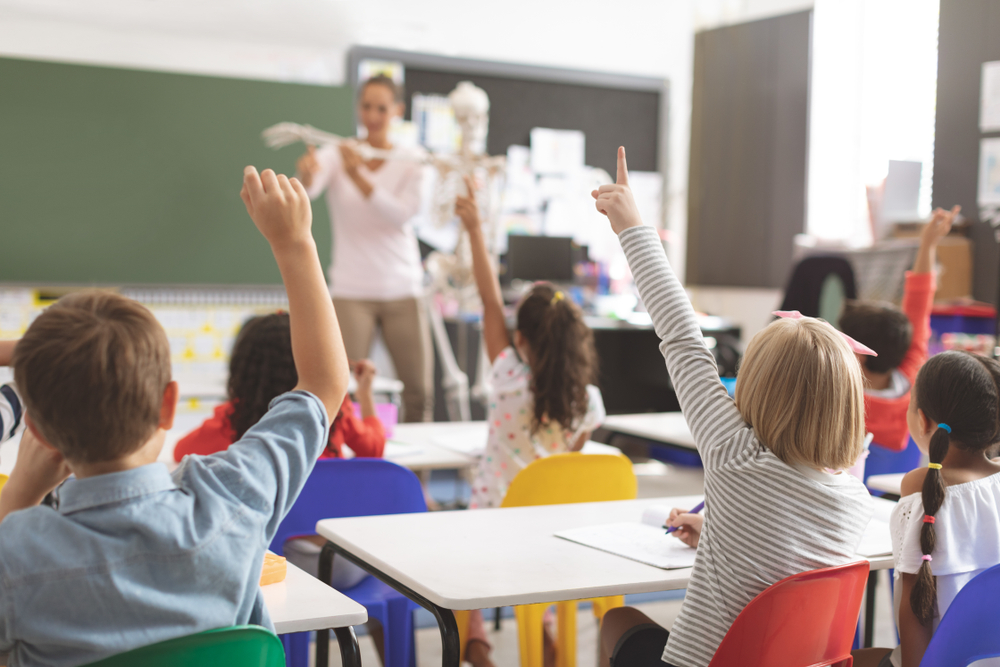Increasing Expectations of Student Achievement
- August 24, 2022
- By Mandi Olson

As a new school year begins it is important to reflect as educators about the choices we make each day to ensure our actions are leading to positive outcomes for our students. Expectations about student performance is one area of reflection that we should consider. The expectations we hold as teachers and as parents in regards to students has a definite impact on student learning. If we have low expectations for students this expectation is typically met. In addition, if we set high expectations for students while providing appropriate support and challenge, students can meet these expectations. Because typically, the expectations we set, influence our own behavior and the choices we make in regards to the students we serve. Therefore, if we set low expectations for students we tend to not adequately support or challenge certain students. Conversely, if we set high expectations for students we tend to provide the right amount of support or challenge to students which help them meet our expectations.
Educational research can help educators focus on what matters most to make informed decisions to better support student learning and growth. Researcher, John Hattie, examined and synthesized more than 1,000 meta-analyses which comprised more than 50,000 individual studies, to determine factors that affect student learning and achievement. In his book, Visible Learning, Hattie ranked 138 effects that influence learning outcomes and he continues to add to his research as his original list has grown to 195 (Hattie, 2017). This research is helpful to educators because if almost any change in education will have a positive effect, why not focus on those that will have the greatest effect on student learning? A year’s growth, calculated by Hattie, is 0.40. So from his rankings of 195 effects on learning, educators can examine those influences that have a greater chance of increasing student learning and begin to use them in their teaching practice.
Educators and parents can combine efforts to increase expectations for students’ achievement. There are many choices that we can make to better support our students. By developing partnerships with parents, teachers can work with parents to combine efforts and increase our impact on student learning. Hattie has identified parental involvement as having the potential to accelerate learning with an effect size of 0.42. There are many components to parental involvement. Parental involvement refers to the amount of participation a parent has when it comes to schooling and the child’s life. This can be via events and volunteer opportunities, school management, helping with homework, etc. (Hattie, 2022). If we break this down further we find that parents who listen to their child reading has an effect size of 0.51 which can also accelerate learning. However, what really makes the biggest difference is when parents establish and communicate high expectations for student achievement with their child (Hattie, 2022). High expectations for student achievement and verbalizing these parental expectations to the child has an effect size of 0.70. By effectively communicating and collaborating together, parents and teachers can ensure that high expectations are communicated to students.
Teachers also have a vital role to play in communicating expectations to students. Teacher expectations have the potential to accelerate student learning with an effect size of 0.42. These are expectations about student performance held by teachers. These can be accurate or affected by biases (social background, gender, culture), but more often teachers hold either low, medium or high expectations for all their students (Hattie, 2022). When coupled with Teachers Estimates of Achievement 1.46 we find that the potential to considerably accelerate student learning and growth can be harnessed to triple the amount of learning in a year. The estimates of student achievement made by teachers are teacher judgments which can include: helping to set expectations; be used to benchmark past understanding; are involved in setting the next challenges, identify those who may have early signs of difficulties; inform placement and intervention choices; and influence instructional choices. These judgments come from questioning, observing, written work presentations, how the student reacts to increased challenge, and assignments and tests (Hattie, 2022).
The expectations that parents and teachers have for their students are often met. This is because the actions that parents and teachers take as a result of the expectations set help students to reach the expectations. If parents and teachers typically set lower expectations for certain students (based on behavior or previous academic performance) then often these students are given the opportunities to grow. Parents and teachers should be cognizant of the expectations they have for their students and set high expectations for all students. After setting these expectations proper support, challenge, and encouragement should be given to help students reach their educational goals. By communicating our expectations of achievement to students and providing support during their journey of learning, students will meet our expectations of achievement. As we start a new school year, it is helpful for teachers and parents to think about the expectations they set for students and ensure that they are setting and communicating high expectations for their students.
Hattie, J. (2017, May). How to Empower Student Learning with Teacher Clarity. Corwin. Retrieved November 15, 2021, from https://us.corwin.com/sites/default/files/corwin_whitepaper_teacherclarity_may2017_final.pdf.
Hattie, J. (2022). Visible Learning Metax website: Parental Expectations. Retrieved August 16, 2022, from https://www.visiblelearningmetax.com/influences/view/parental_expectations_
Hattie, J. (2022). Visible Learning Metax website: Parent Involvement. Retrieved August 16, 2022, from https://www.visiblelearningmetax.com/influences/view/teacher_estimates_of_achievement_
Hattie, J. (2022). Visible Learning Metax website: Teachers Estimates of Achievement. Retrieved August 16, 2022, from https://www.visiblelearningmetax.com/influences/view/teacher_estimates_of_achievement_